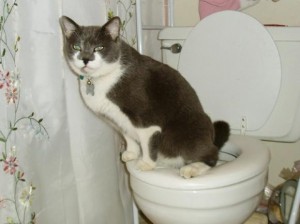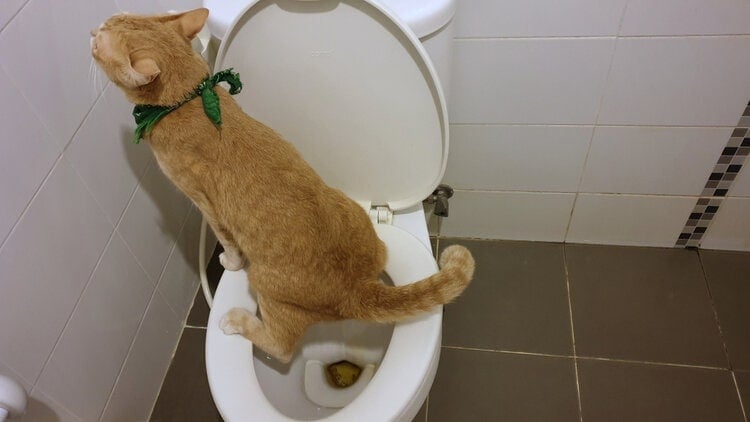What Flushing Animal Waste Down the Toilet Is Harmful
What Flushing Animal Waste Down the Toilet Is Harmful
Blog Article
What're your beliefs on Don't Flush Your Pets Poo Down The Loo, Vet Warns?

When it pertains to taking care of waste, particularly animal waste, many individuals usually consider the convenient alternative of flushing it down the toilet. However, this relatively simple service can have significant repercussions for the environment and public health. In this short article, we'll explore why flushing animal waste down the toilet is a poor concept and supply different approaches for proper disposal.
Introduction
Proper garbage disposal is important for keeping ecological sustainability and public health. While it may appear safe to flush animal waste down the commode, it can result in various problems, both for the atmosphere and human well-being.
Dangers of flushing animal waste
Environmental effect
Purging animal waste presents dangerous germs and virus into rivers, which can adversely impact water ecosystems. These virus can contaminate water resources and damage marine life, disrupting delicate environments.
Public health issues
Animal waste contains dangerous germs such as E. coli and Salmonella, which can position serious wellness risks to people. Flushing pet waste down the bathroom can contaminate water materials, causing the spread of illness and infections.
Alternatives to flushing
Instead of flushing pet waste down the commode, there are numerous alternate disposal techniques that are extra eco-friendly and hygienic.
Composting
Composting pet waste is an environmentally friendly way to throw away it. By composting, raw material is broken down right into nutrient-rich soil, which can be made use of to fertilize yards and plants.
Land fill disposal
Dealing with pet waste in a garbage dump is another option. While not as environmentally friendly as composting, it is a more secure option to flushing, as it prevents the contamination of water resources.
Family pet garbage disposal systems
There are customized pet waste disposal systems readily available that safely and hygienically deal with pet waste. These systems typically utilize enzymes to break down waste and remove smells.
Actions to correct animal garbage disposal
To guarantee proper disposal of animal waste, follow these actions:
Scooping and getting waste
On a regular basis scoop and bag pet waste utilizing eco-friendly bags. This protects against waste from infecting the environment.
Utilizing assigned waste containers
Dispose of bagged animal waste in assigned waste containers, such as garden compost containers or landfill bins. Avoid flushing it down the bathroom in all prices.
Cleaning up litter boxes and pet locations frequently
Frequently tidy litter boxes and animal locations to prevent the accumulation of waste and bacteria. Usage pet-safe cleansing items to maintain health.
Advantages of correct disposal methods
Adopting proper disposal methods for pet waste provides a number of benefits:
Lowered environmental pollution
Proper disposal methods lower the threat of environmental pollution, shielding rivers and communities from contamination
Minimized danger of water contamination.
By preventing flushing animal waste down the toilet, the danger of water contamination is substantially decreased, guarding public health.
Improved hygiene and health
Correct disposal approaches advertise better sanitation and health, producing a more secure environment for both humans and pets.
Final thought
To conclude, flushing pet waste down the commode is hazardous to the environment and public health. By adopting different disposal methods and adhering to appropriate waste monitoring practices, we can lessen the adverse impact of pet waste and add to a cleaner, healthier world.
What To Do With Dog Poo – The Do's And Don'ts Of Disposing Of Faeces
Dog poo bins
Some councils provide dedicated dog waste bins in popular dog-walking areas that can take dog poo that has been bagged but you can legally dispose of dog waste in any public litter bin, as long as it is securely bagged. This also applies to your wheelie bin at home.
Do not flush
Water companies do not recommend flushing dog faeces down the toilet because certain parasites can survive the water processing treatment and are potentially harmful to humans. You should also never consider flushing dog poo that has been bagged down the toilet as the bags will not break down and instead create severe blockages in the sewage system.
In the woods
The Forestry Commission promotes a ‘stick and flick’ method for dealing with waste in the woods. This means finding a stick and using it to flick any poo from off the path so that it is out of the way of other walkers. You could also bury it as long as it is not in an area where there might be livestock.
Livestock
Parasites found in dog poo can be transmitted to livestock if they inadvertently eat infected faeces that has been left on grazing land. This could result in the death of sheep or abortion in cattle so you should always make sure you pick up your dog’s waste in fields where livestock could be present.

Frequently tidy litter boxes and animal locations to prevent the accumulation of waste and bacteria. Usage pet-safe cleansing items to maintain health.
Advantages of correct disposal methods
Adopting proper disposal methods for pet waste provides a number of benefits:
Lowered environmental pollution
Proper disposal methods lower the threat of environmental pollution, shielding rivers and communities from contamination
Minimized danger of water contamination.
By preventing flushing animal waste down the toilet, the danger of water contamination is substantially decreased, guarding public health.
Improved hygiene and health
Correct disposal approaches advertise better sanitation and health, producing a more secure environment for both humans and pets.
Final thought
To conclude, flushing pet waste down the commode is hazardous to the environment and public health. By adopting different disposal methods and adhering to appropriate waste monitoring practices, we can lessen the adverse impact of pet waste and add to a cleaner, healthier world.
What To Do With Dog Poo – The Do's And Don'ts Of Disposing Of Faeces
Dog poo bins
Some councils provide dedicated dog waste bins in popular dog-walking areas that can take dog poo that has been bagged but you can legally dispose of dog waste in any public litter bin, as long as it is securely bagged. This also applies to your wheelie bin at home.
Do not flush
Water companies do not recommend flushing dog faeces down the toilet because certain parasites can survive the water processing treatment and are potentially harmful to humans. You should also never consider flushing dog poo that has been bagged down the toilet as the bags will not break down and instead create severe blockages in the sewage system.
In the woods
The Forestry Commission promotes a ‘stick and flick’ method for dealing with waste in the woods. This means finding a stick and using it to flick any poo from off the path so that it is out of the way of other walkers. You could also bury it as long as it is not in an area where there might be livestock.
Livestock
Parasites found in dog poo can be transmitted to livestock if they inadvertently eat infected faeces that has been left on grazing land. This could result in the death of sheep or abortion in cattle so you should always make sure you pick up your dog’s waste in fields where livestock could be present.

I hope you liked our piece about Can You Flush Dog and Cat Poo Down the Toilet?. Thanks a ton for finding the time to read our content. Loved our post? Please quickly share it. Let others locate it. Thank you so much for taking the time to read it.
Visit Website Report this page